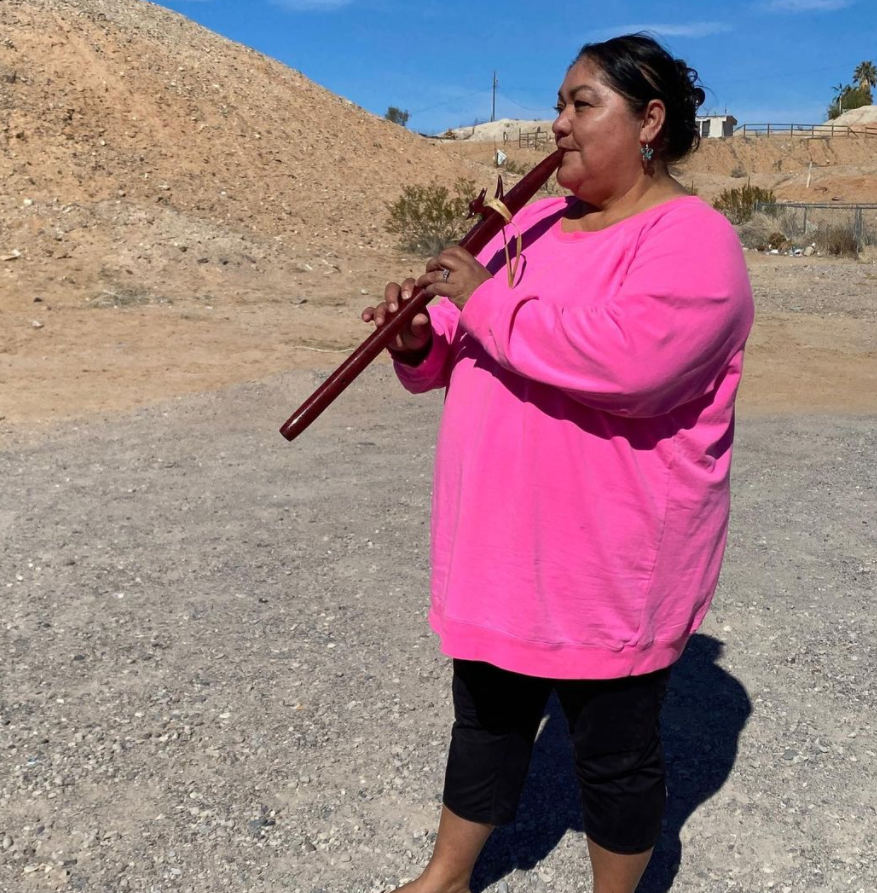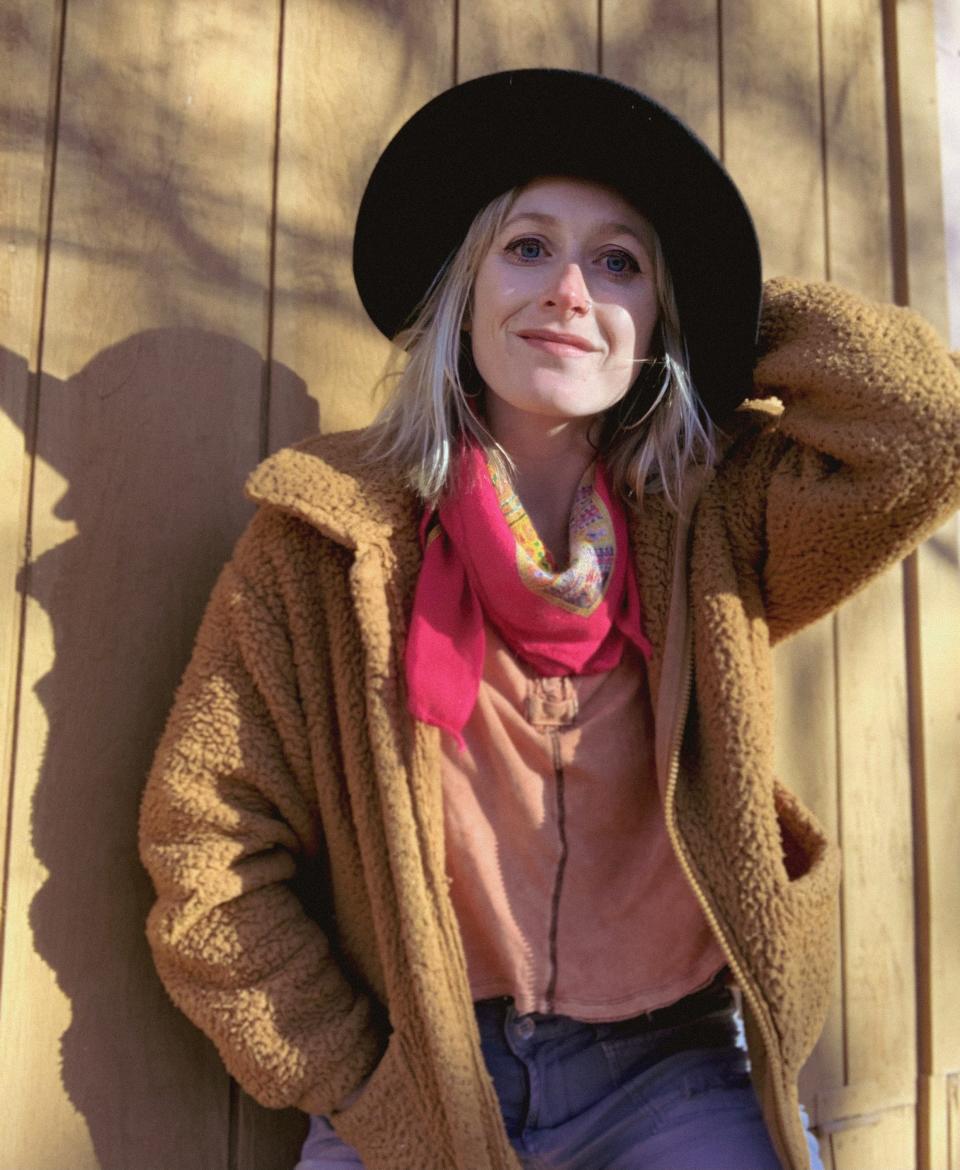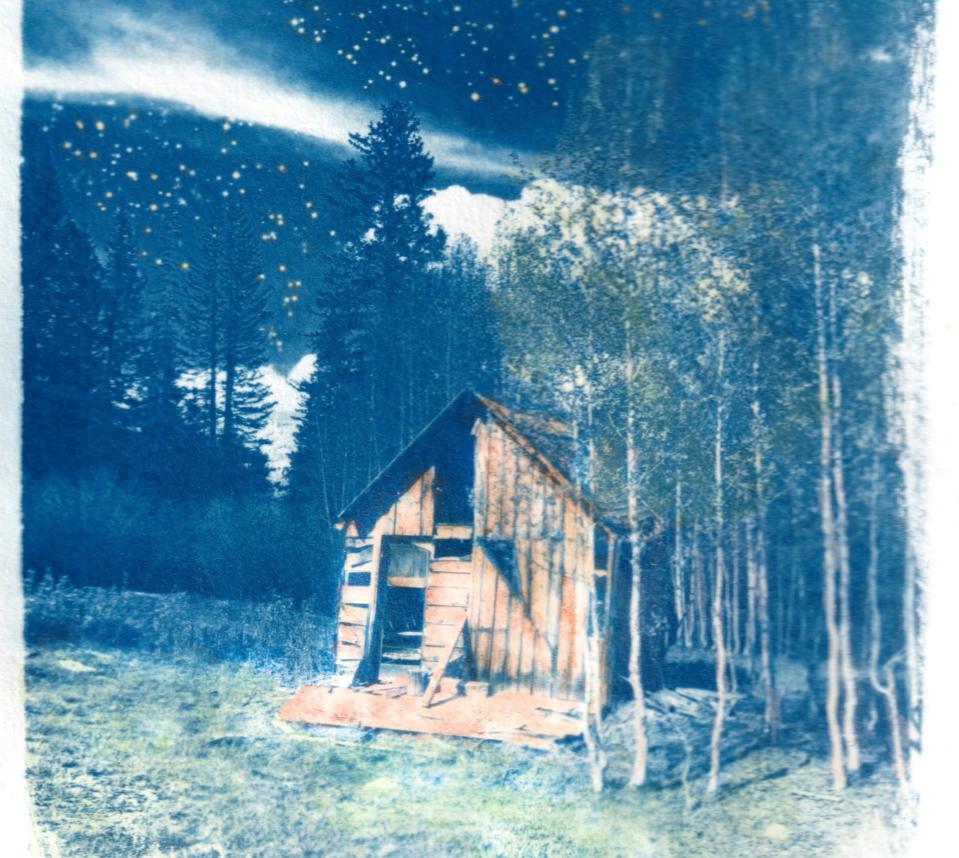Armed with microphones and a latex balloon, an artist captures Utah's Zion National Park
Far from the roar of the crowds bustling around the base of Zion National Park, 53-year-old John Roach hikes the canyons equipped with a piece of gear essential to his job — a latex balloon.
With microphones in tow and all of his senses on high alert, Roach hikes to a clearing looking for sound — the kind of sound that characterizes the park.
When he finds it, he stops, breathing in the sound of cracking ice and rustling dead leaves in the winter wind.
And then, with a needle in hand and microphones on, he pops the white balloon as a booming artificial echo swirls off the rock faces around him and latex pieces fall to the canyon floor like the melting snow.
Layers of sound rush into the microphone, a testament to the layers of rock off which the sound waves bounced.
Some waves only make it to his ears though, making an indelible memory of the opportunity to be the Artist in Residence for one of the nation's most popular national parks.
Roach is one of this year's artists in Zion, and his February residency marks the first time in the history of the program a sound artist has been chosen.
"I think one of the things that I value about working this way, is that we've so prioritized our eyes that we tend not to spend enough time thinking about our other senses and how critical they are about sort of shaping our world," Roach said. "So when I'm listening really hard, sometimes I'm starting to see things differently, too."
Every national park in Utah, with exception of Bryce Canyon National Park, hosts at least one artist in residence per year going back over decades for some parks.
"Art has been an important means of communicating the unique beauty and history of our nation's public lands and national parks, starting in the late 19th century," Capitol Reef National Park Superintendent Sue Fritzke said in a press release.
From sound art to dance to bead-weaving to more conventional types of art like photography and drawing, most of this year's seasoned artists in residence have one thing in mind — conservation.
"I think making art is a really good opener for people to talk about the conservation of these places, right?" said Sam Metzner, the Southeast Utah group's artist. "Because they can see the beautiful places and then maybe that evokes a different emotion and different thoughts. Just like using it as a way to open the narrative around how we can preserve our natural places, which is really important."
John Roach, Zion

Roach is no stranger to surround-sound as he's a native of Queens, New York.
Although he has degrees in English and painting, Roach discovered sound art as a way to capture stories that are not simply pictorial or representational and are especially impactful to the human experience.
"I think, sometimes, if we listened, we might recognize the sounds and the way that we're shifting the soundscape," he said.
Roach said listening means that "we're a little bit more conscious of what we're putting into the world in the same way that we want to think more about things like climate. It means a change of behavior to some degree. And I think listening also can promote a different kind of empathy, as well."
While Roach is capturing the natural sounds that help draw so many visitors to Zion, it's the noise people make in the park that is starting to dominate the soundscape.
"The impact of humans is part of what this park is, like it or not," he said.
Roach isn't ignoring the human element of the park as he's incorporating interviews with locals and members of the Southern Paiute Tribe, whose ancestral home is Zion.
"They have helped to guide how I'm thinking about listening," he said. "What I'm doing for folks here is to talk about it as like a movie for your ears. You know, if you imagine a movie for your ears, it's something that is sort of slipped in between being abstract and being informational."

From vehicles to radios to shuttles and more, human-made sound affects more than just Roach's art. Wildlife can become stressed from the noise, which affects their health, experts say. And for people seeking nature's quiet stillness, they might not find it during the busy season inside a park that drew more than 5 million visitors last year.
More: Zion National Park hit record 5 million visitors in 2021. What's next for Utah parks?
"I think, as an artist, it's something I struggle with because I love the natural sounds and I don't love the sounds that are interrupted by motorcycles," Roach said. "And yet those motorcycles exist, right? They're part of this place ... and interrupt our soundscape in the same way that a parking lot interrupts our landscape. It's not like when the dinosaurs roamed the earth."

To preserve Zion for when this generation are considered dinosaurs, Roach said sound art is a way to encounter the landscape "in a way that you don't usually recognize."
And Roach is not the only artist looking into the past to preserve it for the future.
Subscription sale: Get 6 months of unlimited access for just $1. Subscribe today!
Steve Dudrow, Capitol Reef

Under the cover of the deep, quiet night, 69-year-old Steve Dudrow from Mesquite sets up camp looking straight up, not at the landscape of Capitol Reef.
With the camera's exposure open and a podcast in his ears, his mind drifts back in time to the indigenous people and the settlers from The Church of Jesus Christ of Latter-day Saints who marveled at the stars from that exact spot.
"What did the people before us see and what did they get out of it?" Dudrow said.
Self-described amateur dark sky photographer Dudrow is a retired software application architect who volunteers for the National Park Service around the southwest while writing and illustrating children's books based on adventures with his grandson Teddy.

Dark-sky photography interests Dudrow because of its mystery, and during his stay in July, he will attempt to capture the mystery of the Milky Way as seen from one of Utah's five dark sky-certified national parks.
He said he chose Capitol Reef because it's his wife Gwen's favorite park and there is so much to explore as one of Utah's least-visited parks.
"I’m a person who doesn’t know their constellations, but my whole thing is I’m just amazed with movement and light," he said. "You look up in the sky and you’re just looking at history. We’re so little and we’re just here."
Yet the smallness of humanity doesn't stop the impacts visitors can have on the environment, even the sky.
"It gives me the most pleasure to use my photography skills for public lands projects capturing volunteers doing good things for nature and, on the downside but necessary, documenting wilderness and cultural-site incursions and damage caused by humans," he said in his official park profile.
Sam Metzner, Arches and Canyonlands

While 28-year-old Moab resident Sam Metzner might not be working through the dark night, she will be working in a dark room creating cyanotypes, or unique handmade photographs.
Using several different types of cameras, Metzner adds color and chemicals to create photos that are irreplicable, just like the landscape.
"I just love the mindfulness aspect that comes from making handmade photographs. I think it's something that you don't see very often these days," she said. "I think it creates an almost dreamlike, surreal vibe to the landscapes, almost timeless in a way."

The Southeast Utah group, which includes Arches and Canyonlands National Parks plus Hovenweep and Natural Bridges National monuments, chooses a "community artist" from the surrounding areas for the summer rather than bringing in a resident for a few weeks.
Metzner moved to Moab from North Carolina to work in wilderness therapy but stayed because of the wonderful community and magical desert landscapes, her official park profile said.
"Her current work revolves around the playful yet timeless exploration of landscapes and iconic scenery in Moab," it said.
Metzner's upcoming work in the parks, starting in April, will create a "timeless texture" for the viewer.
"So they can imagine these landscapes as they are throughout time and in our time now and also as they have been years and years ago," she said. "I imagine that's important, especially since there are so many tourists coming and there's some fear that we're losing some parts of the park and some memories like that."
This past year, Arches alone saw a record 1.8 million visitors, which forced park officials to temporarily delay entry for the majority of days last busy season. This year, Arches will pilot a timed-ticketed entry system to manage tourism over the summer when Metzner will be in the park.
More: Arches National Park to pilot ticketed timed entry system next year: what you need to know
"I think for creating the conversation of these landscapes with folks who are visiting the park, I think art's a really good avenue to pull people in to kind of examine the landscapes a little more deeply," Metzner said.
Other artists
While Metzner is the Southeast group's only artist, Capitol Reef and Zion have several.
Zion's 2022 Artists in Residence also include:
Leah Silva, Dance, April.
Bryce Lafferty, Drawing, May and June.
Katherine Irish, Pastel, October and November.
Capitol Reef's 2022 Artists in Residence also include:
Lorraine Bubar, Papercut, April.
Marty Kotter, Fiber, May.
Jennifer Alexander, Beadweaving, August.
The parks provide opportunities for visitors to interact with the artists through their residency with more details posted on each park's website as they develop. Artwork from former artists is donated to the park and is available to view on the websites as well.
K. Sophie Will is the National Parks Reporter for The Spectrum & Daily News through the Report for America initiative by The GroundTruth Project. Follow her on Twitter at @ksophiewill or email her at kswill@thespectrum.com. Donate to Report for America to support her work here.
This article originally appeared on St. George Spectrum & Daily News: Artists stress conservation of Zion, Arches, other Utah national parks

